6 ways to feed seedlings with banana skins
After eating a banana, people usually throw the peel into the trash can. And then they go to the store to buy fertilizer for seedlings and indoor flowers. Why waste time and money if the perfect food is already in the waste bag? Of course, no family can eat so many exotic fruits that the skins are enough for a whole vegetable garden, but for a small box or several pots, one bunch will be enough. When it's December outside and all the plants are dormant, keep frozen or recycle the cleanings, they will come in handy in a few months.
Pros and cons of banana peel feeding
Exotic fruits grown under the hot sun have accumulated many useful substances. This is not a product of chemical production; in the peel of a banana, all the elements are in an already processed form, which is well absorbed by other plants. The skins decompose quickly if you bury them in the ground, after 10 days there will be no traces of the skin. The bacteria love the overseas treat and quickly process it into fertilizer.
Organic matter is an excellent seedling feed, and besides it, banana waste contains in large quantities:
- potassium;
- magnesium;
- phosphorus;
- nitrogen;
- calcium;
- sodium.
Advice
If there are aphids in the greenhouse, water the plants with water infused with banana skins. These insects do not like potassium and will try to change their place of residence.
Many substances are assimilated by plants only in the correct combination with other components. When using plant organics, you do not have to calculate the correct proportions, nature has already done this work. The roots pulled out everything necessary from the soil, biological processes produced the necessary reactions, and a unique mixture was formed in all parts of the plant, which is well processed and absorbed by other representatives of the green world.
Do not assume that fruit waste is an environmentally friendly fertilizer. Overseas guests have come a long way to our table: even on the plantations they were treated with all kinds of drugs, then they were plucked, washed in a special solution and in an unripe form and sent on a multi-day trip. It is not profitable for the supplier that half of the goods rotted on the way, so bananas are treated with chemicals. Not all fruits on the way will ripen, the buyer will not take green fruits, and the seller does not plan to keep them in the warehouse until they turn yellow. Ethylene is fired into the chamber, and soon the product, which has absorbed the poisonous gas, appears on the counter.
Is it a terrible story? Do you want to take the peel not to the garden, but to the chemical waste landfill? But you just ate the pulp, which also absorbs poisons, and you feel great. To avoid introducing harmful substances into the soil, rinse the banana thoroughly before cleaning it with warm water and soap. Trash the long fibers between the inside of the rind and the pulp. Buy food products in stores that monitor the quality of goods and work only with trusted suppliers. If you don’t bother with such questions, then does it matter whether you ate chemically-packed fruits bought from a street counter, or ate a tomato from your own garden that absorbed the same substances?
How to make fertilizer from the peel?
Since bananas became available to residents of all corners of Russia, summer residents have come up with many ways to use the peel to feed plants.The first technique was Banana Earth: the skins were kept in water until they rotted, and the resulting slurry was used as fertilizer. The project did not gain popularity: the whole apartment was saturated with the aromas of decaying fruits, and it became impossible to live there.
Garden owners have come up with many other ways to use fruit waste. Basically, all methods come down to 6 options.
- Grind and bury in the ground.
- Fry in the oven.
- Make an infusion.
- Dry.
- To freeze.
- Make compost.
To make the nutritious powder, place the foil on a baking sheet, then the banana skins with the outside facing down and roast in the oven until firm. Crush and store the fertilizer in a plastic bag. Feed the seedlings once a week - 1 teaspoon of powder per plant. You can dry the peel on a battery and place the slices on the bottom of the container before planting. It is necessary to bury it deeply in the ground, on the surface of the crust they begin to mold.
For liquid feeding of seedlings and plants in the greenhouse, make an infusion. Pour three skins with three liters of water and leave for 2 days. For watering, strain the composition and add another 3 liters of water. Do not throw away the soaked residues, but bury them in the garden bed, the peel still retains many useful components. If there are only dried rinds, brew them like tea.
In winter, when fertilizer is not needed, collect the peels in a bag and store in the freezer. You can prepare fertile soil for seedlings in the fall - make compost. Grind the cleanings, mix them with the earth and pour them with special preparations: "Vostok" or "Baikal". Make sure that the composition does not dry out, add new skins every month, water with "Vostok" and mix. The finished compost looks like a greasy black homogeneous mass, usually it takes at least 2 months to process.
Output
Feeding seedlings using a banana peel is a simple, cost-free exercise. In the season when the plants are not growing, you can collect the crusts and store them dry or frozen, compost in advance. In summer, you can use it fresh or water the seedlings with infusion. Numerous reviews of summer residents indicate that any plants respond perfectly to such fertilization, become stronger, more magnificent. No need to throw away plant waste, it is better to return it back to the ground.
Do not be afraid that harmful substances accumulate in the cleanings and feeding will be dangerous. Rinse the skins thoroughly, this will remove the poisons that are on the surface. Chemicals that get into the rind also get into the pulp. To be on the safe side, purchase fruits only from trusted sellers. In any city there are trading companies that value their reputation and sell environmentally friendly goods. Do not skimp on family health, it is better to eat one expensive but safe banana than three cheap fruits of an incomprehensible composition.
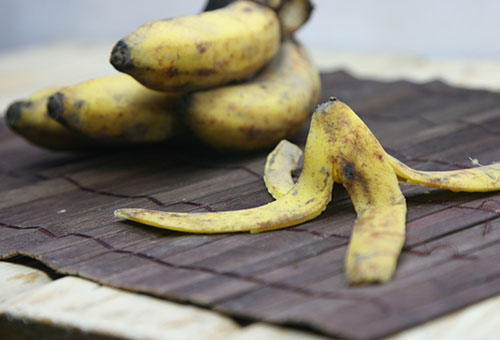
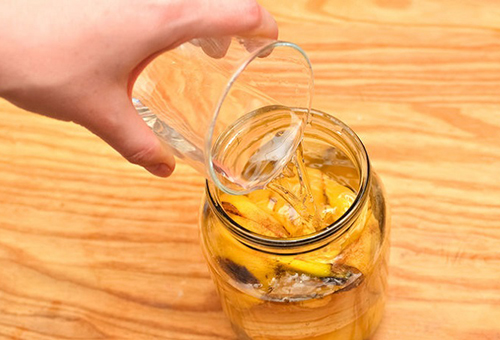
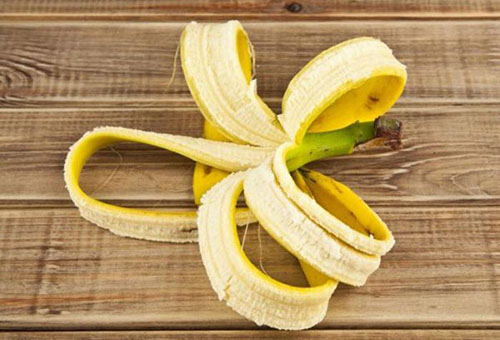
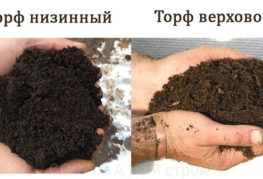
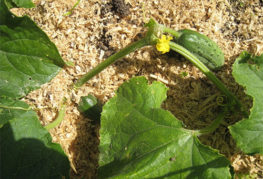

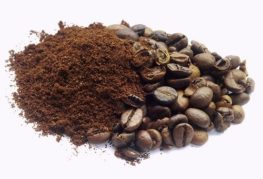
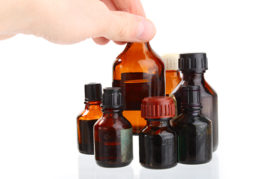
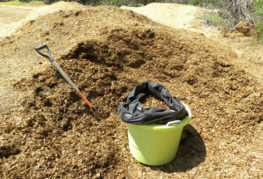
and will be published shortly.